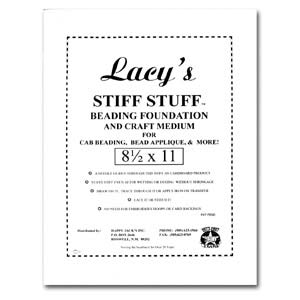
Bead embroidery comes in all shapes and sizes, spanning from sweet little freehand mascots through to complicated statement pendants. ‘Freeform’ bead embroidery gives way to lots of creativity as there are no real rules or patterns to follow. It’s essentially painting by beads!
As there aren’t any real rules, there isn’t a specific pattern for you to follow, but we will share with you a few tips to create sweet little beaded designs such as those you can see below that Jaide whipped up on a Spring evening.
1. Draw or print out your base design shape onto paper or card. You will use this a template and will save you materials vs chopping shapes directly out of felt. You will need two identical pieces, too, as you will be stitching a second backing piece behind the first to cover your threads and stitching when you are happy with your design. Which brings us to…
2. Your backing material is important. Many people like to embroider onto a fabric of their choosing, but we recommend choosing a sturdy felt or stitching onto StiffStuff if you are a beginner as this is much less flimsy.
3. Plan out your design – get your pencils or felt pens out and doodle onto your templates. Having an idea of where to put which colour beads acts as a visual guide, rather than going by eye. This can be especially useful if you’re intending on using geometric patterns and require symmetry. Round beads are best to start your journey into bead embroidery, as they lend for nice movement and easy stitching alongside one another when sewing on blocks of colour. Shaped beads of course can be incorporated, but require a little more planning to fit their shapes into designs. Aside from that, you can use whatever beads you like, wherever you want!
4. You don’t have to stitch each bead on individually. You can thread on, say, 5 beads to your needle and thread and create ‘brush stroke’ effects with them. Try not to use too many, as you still want to maintain a flush fit to the backing, and if you use too many beads on one stitch you will need to go back through a few to fix the beads down. 4-5 of size 11/0’s is about the right length.
5. Don’t worry about being too neat! Once you have finished stitching all your beads onto your first piece of backing, you will then stitch around the edge of a second piece, affixing it your first to hide all those pesky threads and stitch marks on the reverse of your piece.
6. Don’t be afraid to add on a second layer of beads, such as sparkles here and there to your design. Bead embroidery looks great with texture, and this makes filling in any gaps much easier, as it’s all part of the design, of course!
7. Have a pair of sharp scissors handy. There’s nothing worse than trying to continually thread a needle with a thread that has become unbraided. We recommend using DuraThread, as this rarely unravels and is a great thickness for stitching away with your beads.
8. Lastly, don’t try and make your thread too long, it’s much easier to work ‘section by section’ depending on the beads you are using. Simply stitch through your backing and loop through your thread to secure it. Saves on arm cramp when you are repeating the same motion many times. Adding new threads is super easy, don’t forget your threads will be hidden by the secondary backing piece and beads on the front.
We hope you enjoy creating your own bead embroidery pieces, they really are fab and are so versatile. You can attach them to ribbons to use as bookmarks, chains as pendants, pins as brooches and lots more.



